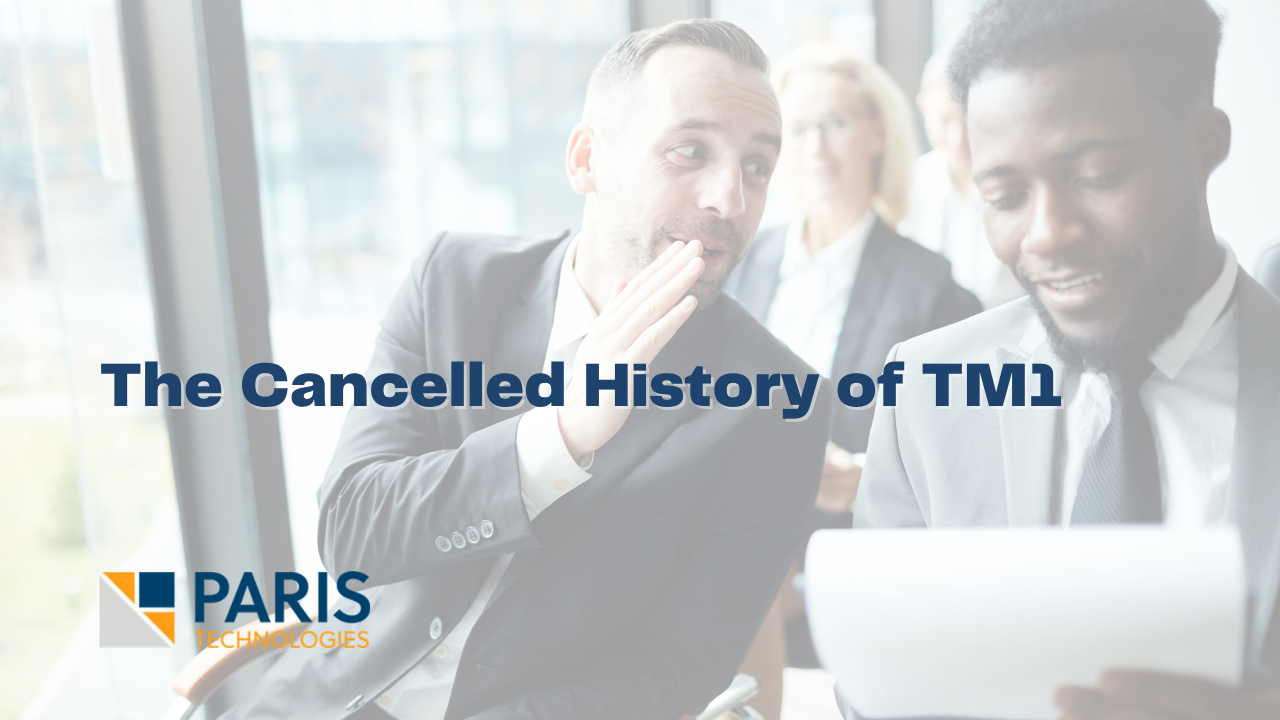A note to the reader: This blog was written to share the history of one of the first OLAP technologies on the market– TM1, now known as IBM Planning Analytics. Here we share the little known history of the product’s development from the beginning. Recently people were curious about the origins of TM/1 on LinkedIn, as this product is approaching the ripe old age of 40! Read on for the tale.)

The history of TM1 started in early 1980. It was a product developed by a company called Sinper, which was the combination of the names of its founders, Jose and Lauren Sinai “Sin” and “per” for Manny Perez. Sinper struggled to survive until October of 1987.
In 1987 Duane Presti was working for Squibb Corporation (now part of Bristol Myers Squibb). He was tasked by the CFO, Anthony W. Ruggiero, to solve a management information problem working with the CIO, John Parker, and the Vice President of Finance, Richard Hoyt to solve an issue for himself and for the President, Jan Leshly. The assignment of this task initiated the beginning of a major change to TM1.
After significant research and determining that the solution was not going to be solved with a traditional transactional technology, Presti began to research analytical/multidimensional databases as a possible solution. From a list of possible candidate solutions, he wanted to eliminate TM1 as a solution due to the risks associated with the size and depth of Sinper. In October of 1987 Sinper had 3 employees: a salesperson, Michael Chesloff, a receptionist, and Manny Perez. Jose Sinai was more of an investor/partner and a consultant.
Presti had initially preferred a product from IRI (Express, which was later sold to Oracle) for the Squibb project, which had a proprietary analytical database. With an enterprise licensing cost at that time of $300,000. It was then determined that the IRI product would also require an IBM 3090 at a cost of approximately $5,000,000. This investment would come with significant reoccurring operating costs. This was an investment that he was not willing to recommend. Presti needed to reconsider TM1. He met with Sinper to determine if it would be possible to evolve TM/1 to a level where it could eventually be a solution for Squibb.
To be clear, in 1987 TM1 was a single-user standalone DOS product with a proprietary database and a green-screen monochrome spreadsheet application. It appeared old even in 1987. Presti met with Perez to determine if it would be possible to evolve TM1 from this primitive level to where it could eventually be a solution to meet the needs for Squibb. After determining that this was a possibility, Presti, at significant professional risk, selected Sinper over other more established vendors placing his bets on the potential of TM1. Presti worked jointly with Perez as an architect to help him to understand and evolve TM1 to meet the needs of Squibb. There were 3 initial requirements, among others, that were needed that did not exist in the product:
- The ability to collaborate. TM1 was a desktop version – a single-user productivity tool. This was a fundamental issue. Presti and Perez developed and tested a solution for collaboration which eventually became a product called the “Spreadsheet Connector”. This online ability to collaborate was the actual birth of online analytical processing (OLAP). It was long before Jim Dorrian of Arbor Software worked with E. F. Codd in 1993 to coin the term On-line Analytical Processing (OLAP). OLAP is now an accepted industry term.
- The ability to model. TM1 could only aggregate along the hierarchy of the dimensions of a cube. They worked jointly to develop formula modeling with algebraic calculations for TM1 cubes. Eventually, this came to be known as “Rules”.
- Performance optimizations. Multiple optimizations were worked on, the most significant was the concept that came to be known as “Feeders”.
During the time that this work was being done, Squibb was the majority of Sinper’s revenue. The initial project was able to beneficially contribute to the requirements of Senior management. Based on the success of this Senior management project, decisions were made to replace the spreadsheet budgeting models with TM1. This project was implemented by Presti and his team at Squibb. The current TM1 – IBM Planning Analytics owes its very existence to Squibb’s leadership of the CFO, Anthony W. Ruggiero and the Vice President of Finance, Richard Hoyt.
While Manny Perez was a skilled developer, he was less skilled in marketing, sales, software distribution, and general business management. So, Sinper struggled with generating revenue in the United States. This was further complicated by Perez as he was convinced that Sinper would take over the spreadsheet market with Sinper’s green screen monochrome application. Initially, Perez was not interested in Presti’s suggestions to connect the TM1 database to Lotus, Excel, and other tools for the longest time. He viewed these suggestions as sacrilegious comments about his product. Presti tried to impress upon Perez that the power of TM1 was not in the Sinper spreadsheet but in the database. Eventually, Perez accepted this and in 1992 a product was released that supported Lotus and Excel.
Presti understood that many companies could benefit from this technology. He formed a company called United Information Technologies, Inc. (UIT). In May of 1990, he negotiated an agreement with Sinper for UIT to have exclusive rights outside of the United States and non-exclusive in the United States. At the time, Sinper had little presence outside the United States. Sinper was to focus on developing the United States as the principal market and UIT was to leverage this success in non-domestic markets. UIT invested millions of dollars to establish direct customers, resellers, and distribution for TM1 outside of the United States including in Germany, the United Kingdom, Denmark, Australia, Hong Kong, and South Africa. By comparison, Sinper did nothing in the United States.
The largest reseller/distributor UIT created was MIS AG. MIS AG was founded in 1988, and they were selling simple spreadsheet add-ins when they got started. MIS AG had 14 employees when UIT began working with them and UIT turned them into a reseller/distributor of TM/1. UIT had created direct customers that it assigned to MIS AG to provide those clients with products and support in German-speaking countries. UIT even provided MIS AG with a human resource that was a highly-skilled, ex-McKinsey consultant who spoke both German and English. This person was employed by UIT to transfer knowledge about the technology and to support MIS AG to build their business. In this way, UIT trained MIS AG to become the first OLAP company in Germany.
When Sinper was sold to Applix, UIT was 90% of Sinper’s revenue. A fact that was not disclosed to Jit Saxena CEO of Applix in due diligence.
There is of course much more to the story, and Duane Presti is building the next generation of OLAP technology here at PARIS Tech.

